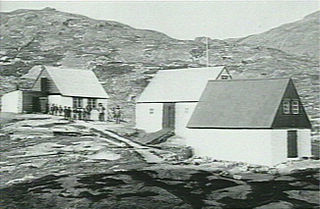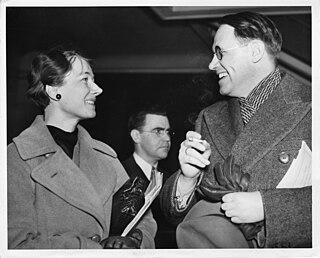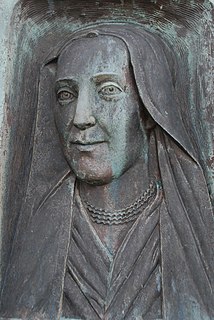External links
- Royal Danish Geographical Society website (in Danish and English)
The Royal Danish Geographical Society (RDGS, Danish : Det Kongelige Danske Geografiske Selskab) is a scientific society aimed at furthering the knowledge of the Earth and its inhabitants and to disseminate interest in the science of geography.
It was founded 18 November 1876 on the initiative of Professor E. D. Erslev. The society is based in Copenhagen, Denmark.
The society awards the Hans Egede Medal in silver 'preferably for geographical studies and researches in the Arctic countries'. It was established in 1916 and named after Hans Egede, who was a Danish missionary in Greenland.

Nuuk is the capital and largest city of Greenland. Nuuk is the seat of government and the country's largest cultural and economic centre. The major cities from other countries closest to the capital are Iqaluit and St. John's in Canada and Reykjavík in Iceland. Nuuk contains almost a third of Greenland's population and its tallest building. Nuuk is also the seat of government for the Sermersooq municipality. In January 2021, it had a population of 18,800.

Hans Poulsen Egede was a Dano-Norwegian Lutheran missionary who launched mission efforts to Greenland, which led him to be styled the Apostle of Greenland. He established a successful mission among the Inuit and is credited with revitalizing Dano-Norwegian interest in the island after contact had been broken for hundreds of years. He founded Greenland's capital Godthåb, now known as Nuuk.
Willi Dansgaard was a Danish paleoclimatologist. He was Professor Emeritus of Geophysics at the University of Copenhagen and a member of the Royal Danish Academy of Science and Letters, the Royal Swedish Academy of Sciences, the Icelandic Academy of Sciences, and the Danish Geophysical Society.

Paul or Poul Hansen Egede was a Dano-Norwegian theologian, missionary, and scholar who was principally concerned with the Lutheran mission among the Kalaallit people in Greenland that had been established by his father, Hans, in 1721.

Lorenz Peter Elfred Freuchen was a Danish explorer, author, journalist and anthropologist. He is notable for his role in Arctic exploration, namely the Thule Expeditions.

Lauge Koch was a Danish geologist and Arctic explorer.

Kangeq or Kangek is a former settlement in the Sermersooq municipality in southwestern Greenland. It is located on the same island that formed the first Danish colony on Greenland between 1721 and 1728.

Kaj Birket-Smith was a Danish philologist and anthropologist. He specialized in studying the habits and language of the Inuit and Eyak. He was a member of Knud Rasmussen's 1921 Thule expedition. In 1940, he became director of the Ethnographic Department of the National Museum of Denmark.

Gertrud Rask was the first wife of the Danish-Norwegian missionary to Greenland Hans Egede and was the mother of the missionary and translator Paul Egede.

Hotel Hans Egede is a four-star hotel in Nuuk, Greenland. It is named after Hans Egede and is the largest hotel in Nuuk. The hotel is located on the main street, Aqqusinersuaq.

Hans Egede Church is an evangelical Lutheran church in Nuuk, Greenland, located in the district of Old Nuuk. The church was consecrated on the 250-year anniversary of the founding of Hans Egede's mission. It is a wooden structure, named after Danish-Norwegian missionary Hans Egede.
Events from the year 1724 in Denmark.
Events from the year 1758 in Denmark.

Jomfruens Egede is a manor house located three kilometres north-west of Faxe, a small town some 40 km south of Copenhagen, Denmark. It owes its current appearance to Sophie Amalie Moth who in the late 18th century altered it with the assistance of Caspar Frederik Harsdorff and Joseph Christian Lillie. The National Museum of Denmark has described it as possibly the finest example from the period.

The Moravian missions in Greenland were established by the Moravian Church or United Brethren and operated between 1733 and 1900. They were operated under the auspices of the Royal Danish College of Missions until its dissolution in 1859 and were finally surrendered to the Lutheran Church of Denmark in 1900. Missionaries were allocated to the region and sometimes even sent wives who had been chosen for them and approved by the drawing of lots, a form of Cleromancy.
The College of Missions or Royal Mission College was a Dano-Norwegian association based in Copenhagen which funded and directed Protestant missions under royal patronage. Along with the Moravian church, it was the first large-scale Protestant mission effort.
Hans Egede Budtz was a Danish stage and film actor.

Hans Jakob Konrad Wilhelmsson Ahlmann was a Swedish geographer, glaciologist, and diplomat.
The Hans Egede medal is awarded by the Royal Danish Geographical Society for outstanding services to geography, "principally for geographical studies and research in the Polar lands." It was instituted in 1916 and named after Hans Egede, a Danish missionary who established a mission in Greenland.